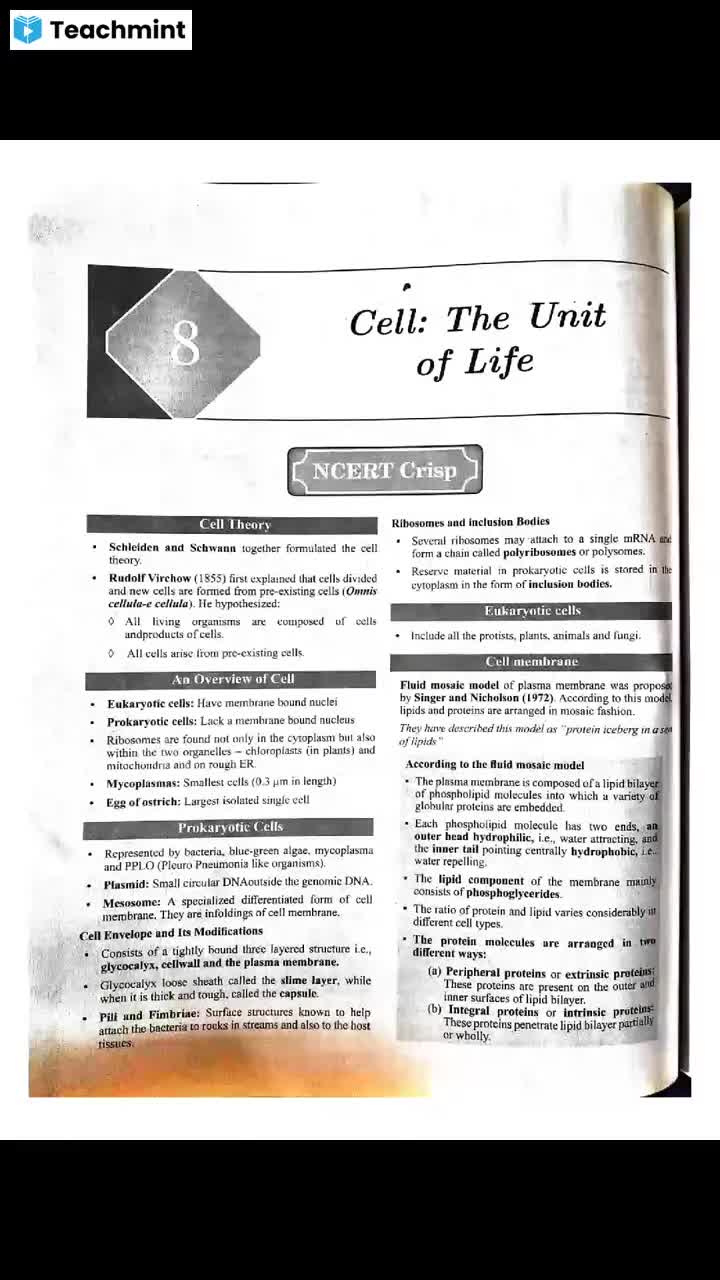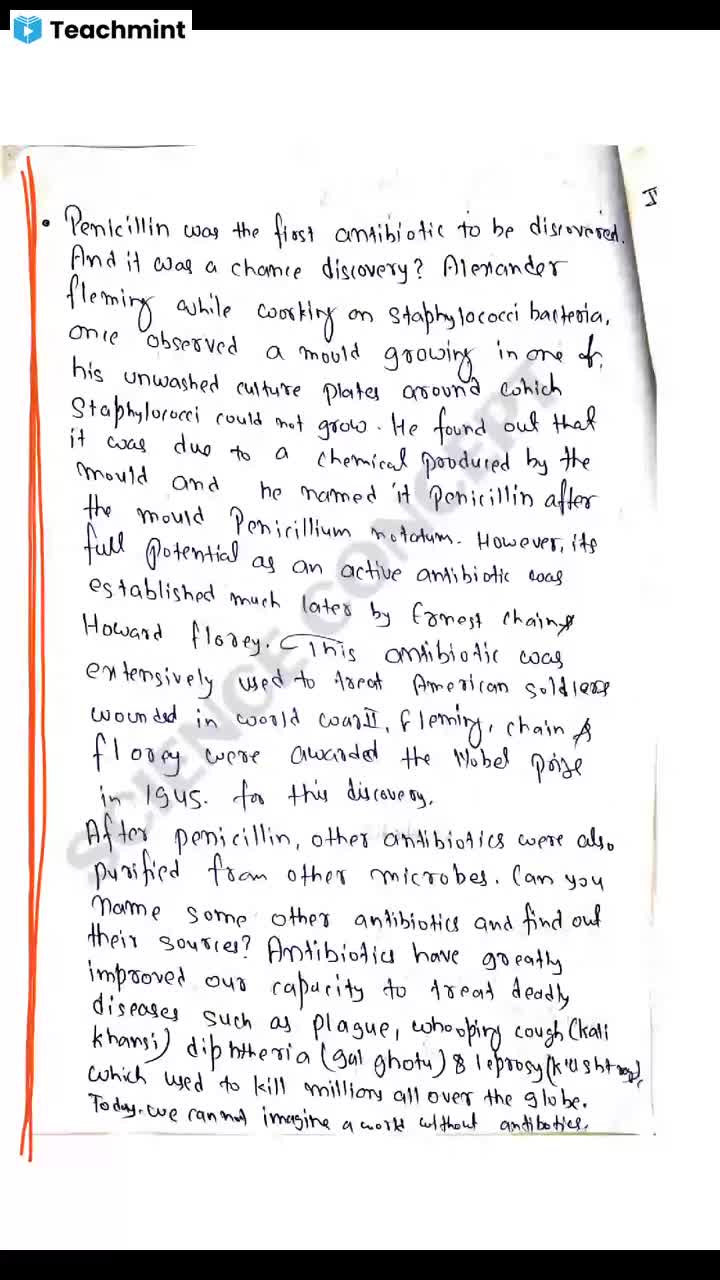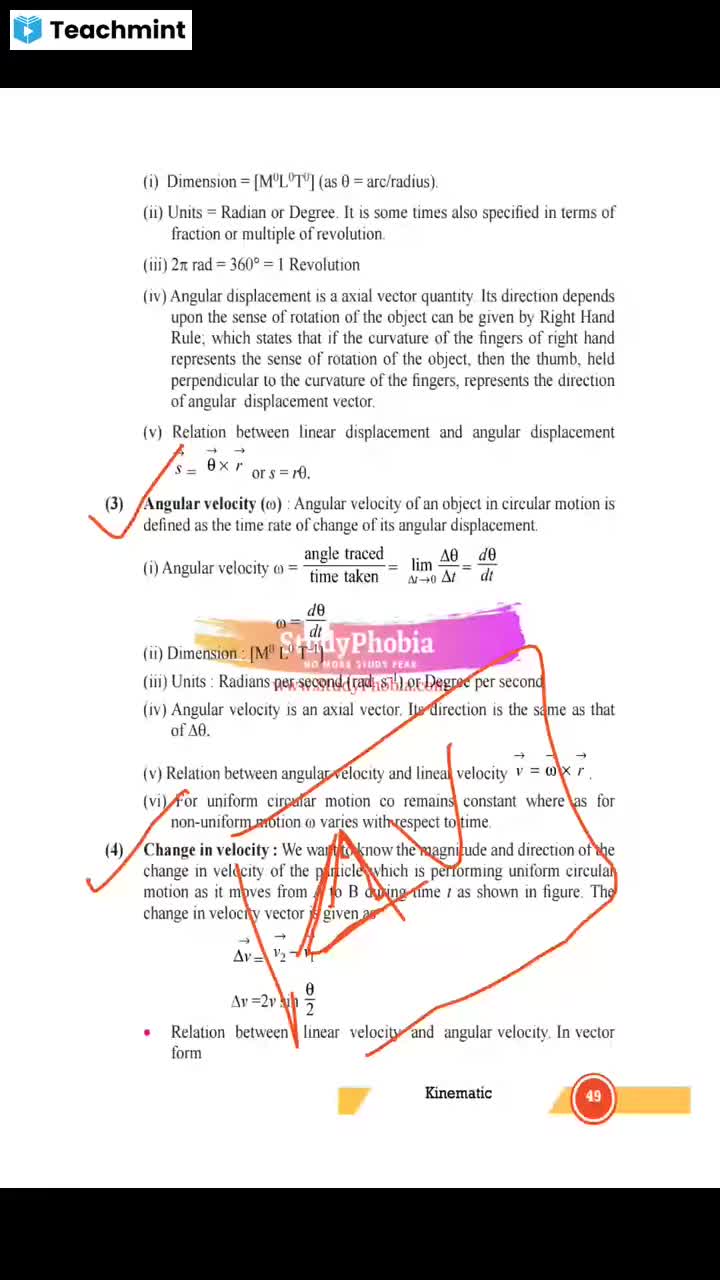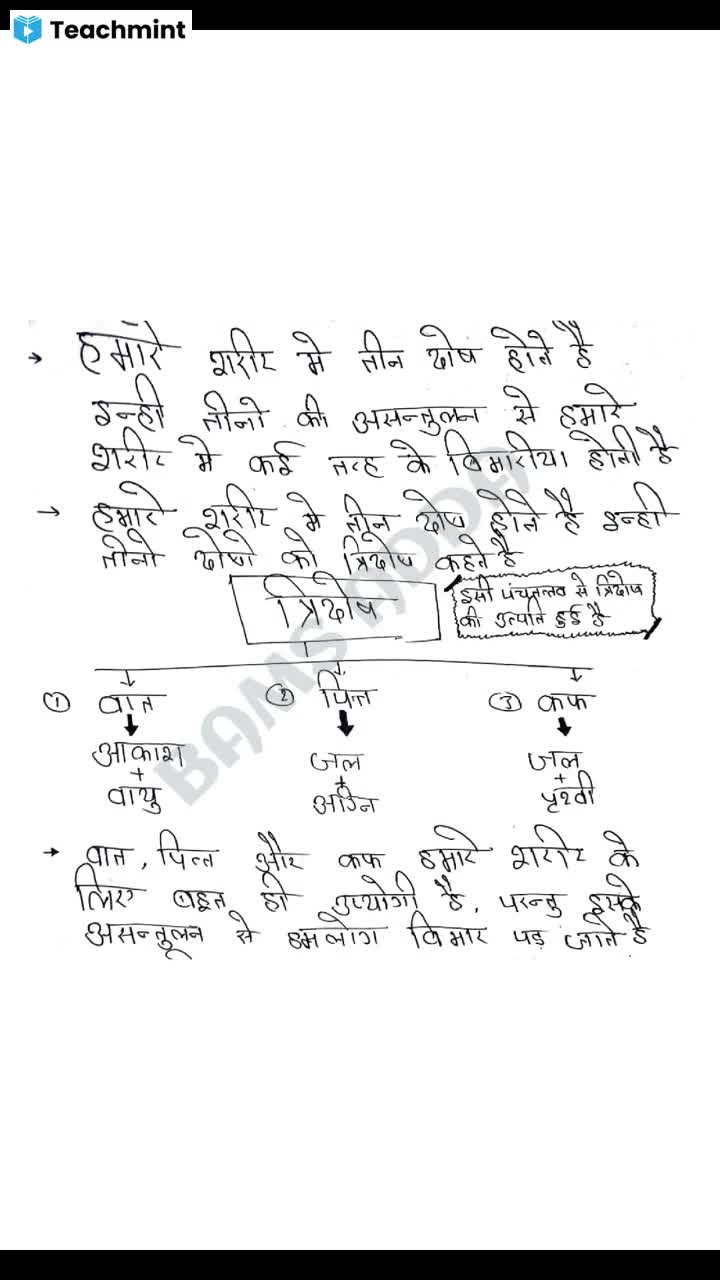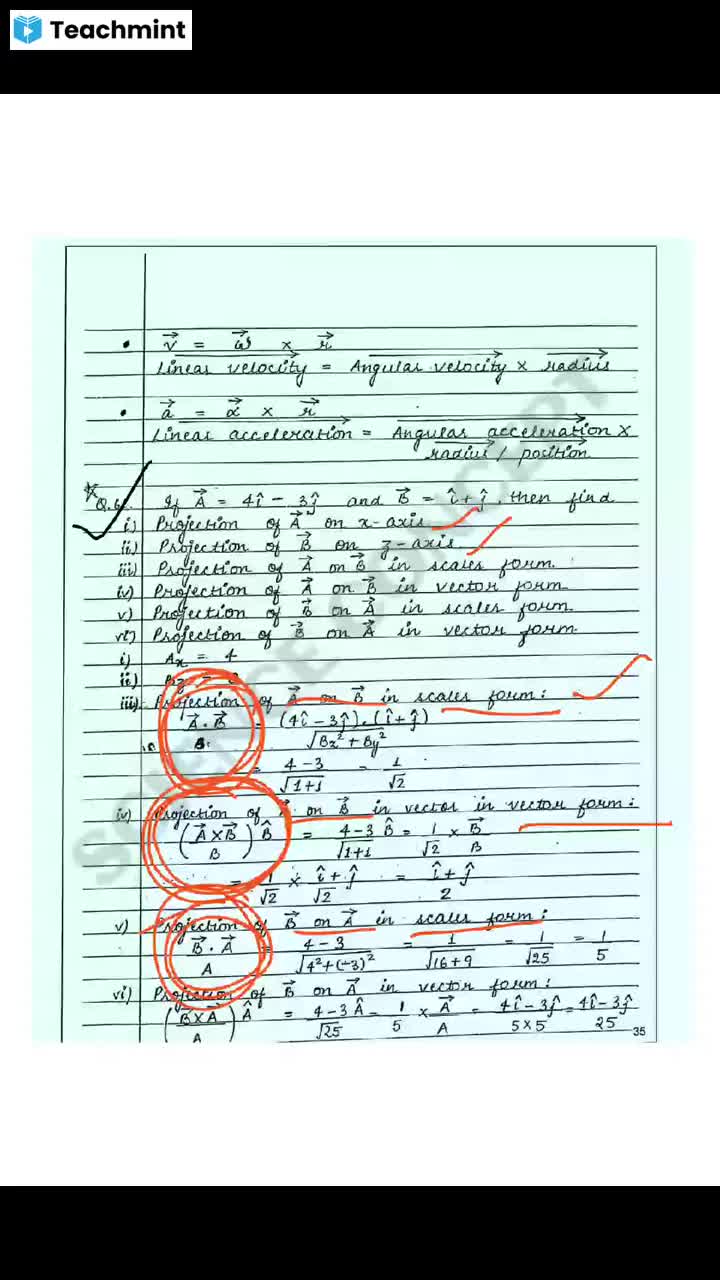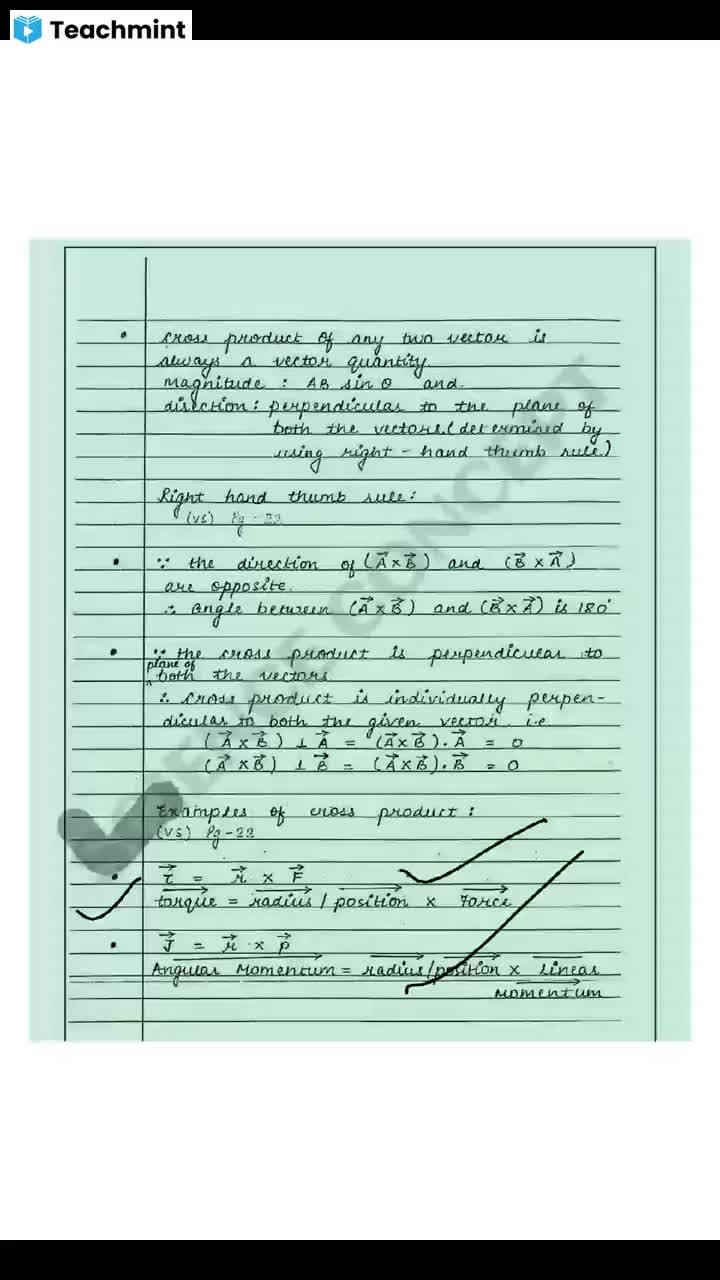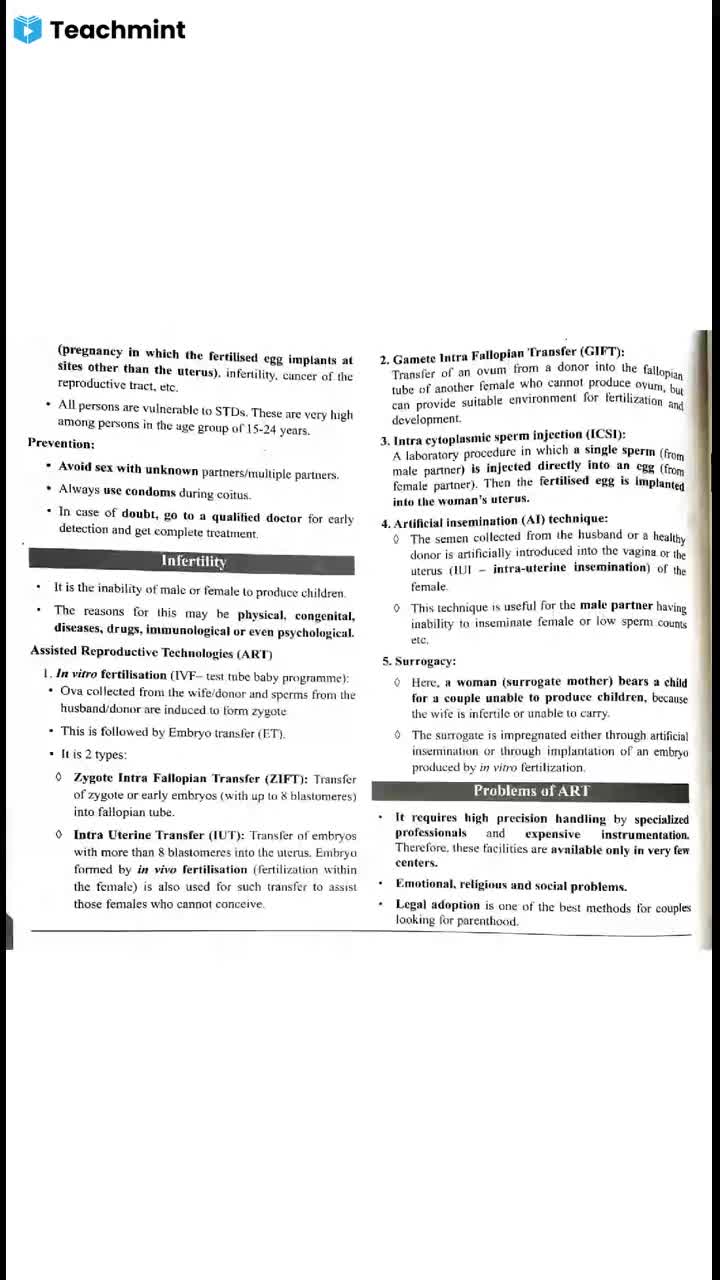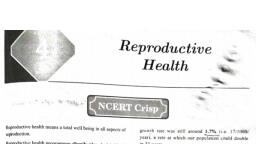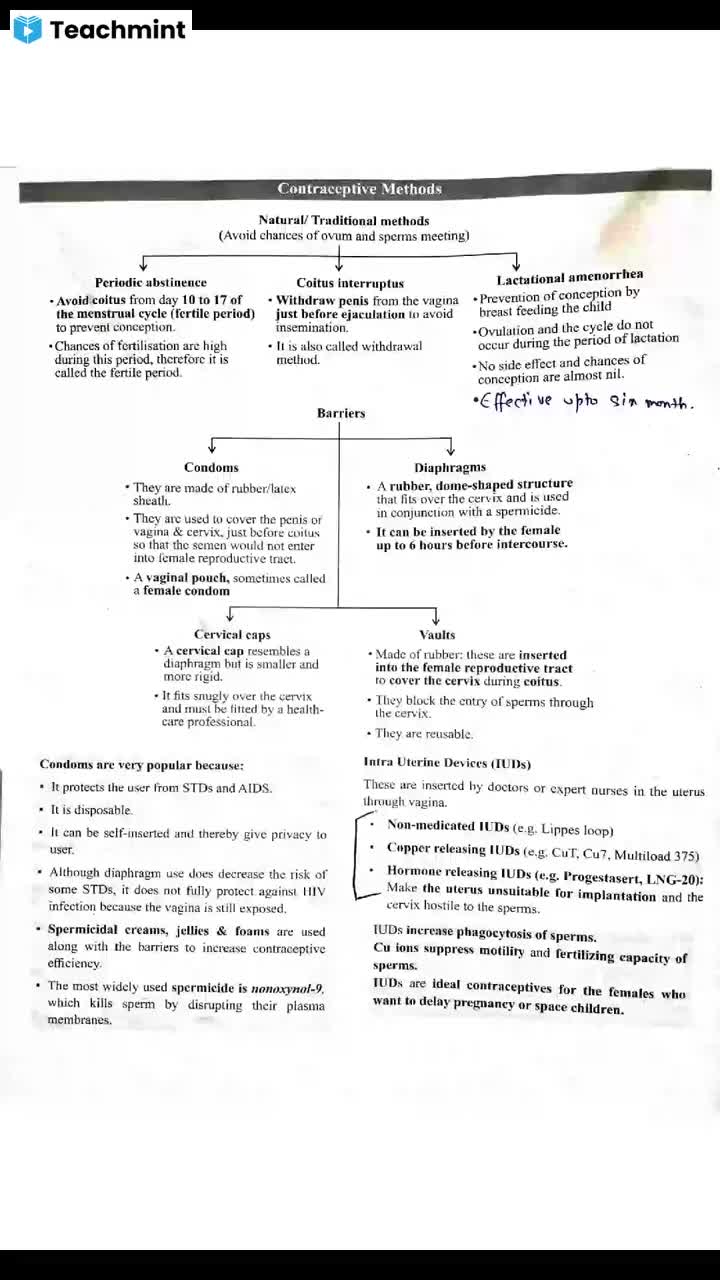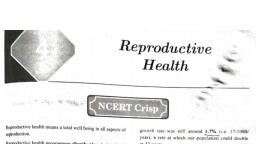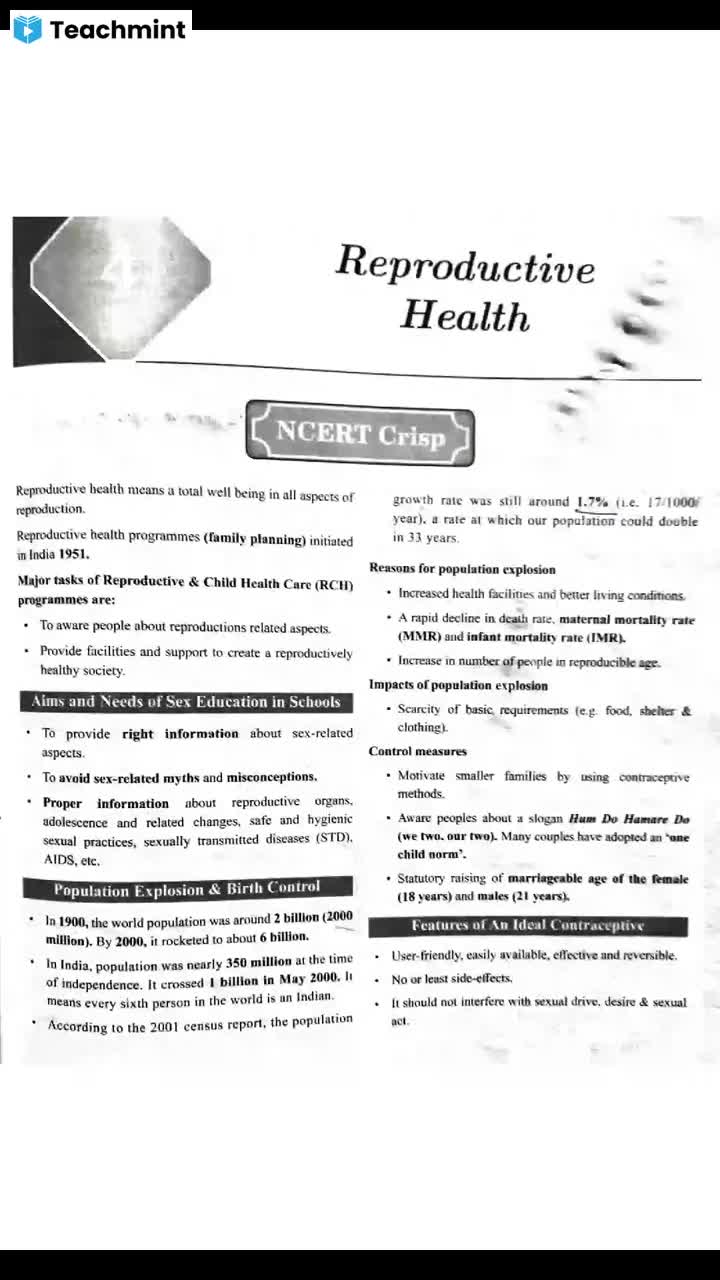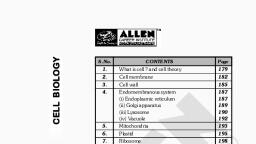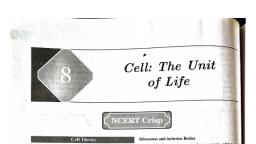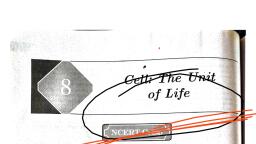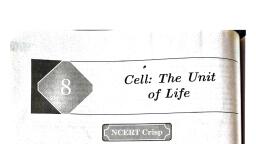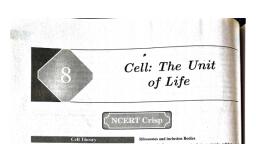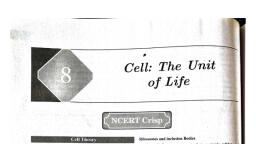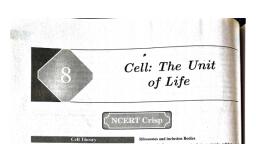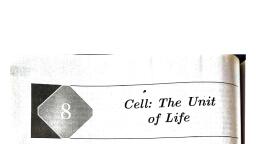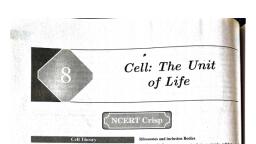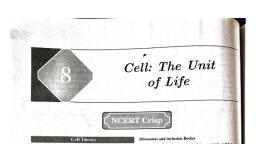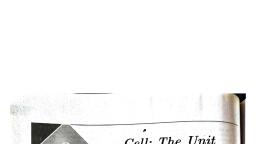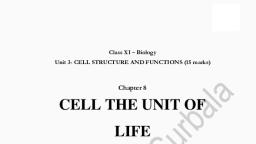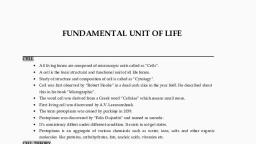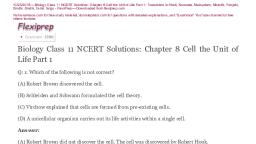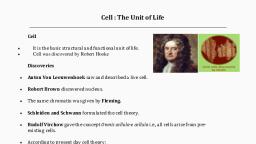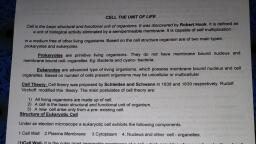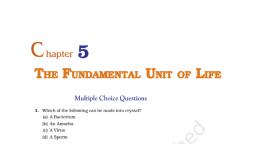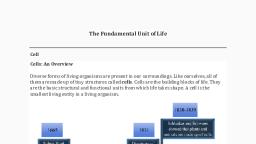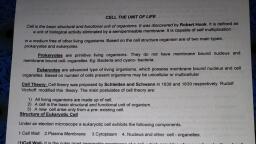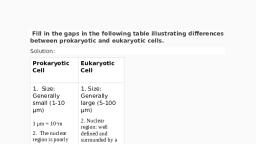Page 2 :
Functions, , (i) ) The pl, It provides cell shape (in animal cells) €.g., the, cteristie shape of red blood cells, nerve cells, bone, , asma membrane encloses the cell contents., , “charac, cells. etc., (iii) Ie allows transport of certain substances into and out, of the cell but not all substance, so it is termed selectively, permeable., , Transport of small molecules (such as glucose, amino, , acids, water, mineral ions etc.), , ethods of cell transport, , (iv), , , , , , [Passive transport i Active transport 7, There. re is no expenditure of | Requires energy in the, ergy form of ATP, , | ene, Transport of molecules is, the concentration, from high to, , , , , , Transport of molecules is, against the concentration, gradient, i.e, . from, low to high region of, concentration., , down, gradient, i.e., low region of concentration., , , , , , The active. transport may, also through a carrier, molecule., , Two types:, + Diffusion: E.g., absorption, of glucose, , , , * Osmosis: Occurs through a, , , , , , semipermeable membrane. |, , Core ey, , , , , , , , , , , , , , , , , , * A non-living rigid structure called the cell wall forms, n outer covering for the plasma membrane of fungi and, plants. Bacteria and Protista., , Functions of cell wall, Cell wall gives shape to the cell, * Protects the cell from mechanical damage and infection, , Helps in cell-to-cell interaction and provides barrier to, , Undesirable macromolecules., , * The cell wall of a young plant cell, the primary wall is, ‘apable of growth, which gradually diminishes as the, cll matures and the secondary wall is formed on the, ‘er (towards membrane) side of the cell., , Composition, , Alg rals like, , ee Cellulose, galactans, mannans and mine, “cium carbonate., , Plants: Ht, ants: Cellulose, hemicellulose, pectins and proteins, , , , The endomembrane system include endoplasmic reticulum, (ER), golgi complex, lysosomes and vacuoles., , * The endoplasmic reticulum is a double unit membrane, structure spread all over the cell and occurs in three, morphological forms viz, cisternae, vesicles and, tubules,, , * In muscles, they are known as Sacroplasmic reticulum., , , , Type of Endoplasmic reticulum, , Types of Endoplasmic reticulum, , , , Rough ER, Bearing ribosomes on, their surface., , Continuous with the outer, membrane of the nucleus., , “Smooth ER, No Ribosomes on their, surface., , , , , , Function: Major site for, synthesis of lipid; synthesis, of lipid-like steroidal, hormones in animal cells., , , , Function: Protein synthesis, and secretion, , ¢ Golgi apparatus was discovered by Camillo Golgi (1898), while studying the nerve cell in owl., , , , , , , , * They consist of many flat, disc-shaped sacs or cisternae, of 0.5um to 1.0um diameter, , e Cisternae are stacked parallel to each other., , * The Golgi cisternae are concentrically arranged near the, nucleus with distinct convex cis or the forming face and, concave frans or the maturing face., , » Materials to be packaged in the form of vesicles from, the ER fuse with the cis face of the golgi apparatus, and move towards the maturing face. This explains,, , _ why the golgi apparatus remains in close association, “with the endoplasmic reticulum., , Functions, , Sort and package materials, to be delivered either to the, intracellular targets or secreted outside the cell., , Modify ribosomal proteins in the cisternae before they, are released from its trans face., , Site of formation of glycoproteins and glycolipids,
Page 3 :
BE ssosomes, , im ‘, = * In Amoeba, contractile vacuole is important for eXcretia,, , Lysosomes are the animal cell’s digestive organelles., , * In protists, food vacuoles are formed by engulfing the, , ae contains: hydrolases - ‘lipases, proteases, food, , carbohy Ses enzymes that hel s in di estion of A rr, , “damaged material, “ . Mitochondria, * Help in cleaning up the cell by digesting damaged ; eMGrane-bound structure, , t : ,, , material of the cell. . aeautes membrane and tice Drane dividin, * When cells are old, diseased or injured, lysosomes attack itsl noe y into two aqueous compartments, j¢_, , their cell organelles and digest them. In other words the outer and the inner compartment., , lysosomes are autophagic, i.e., self devouring. ° The c matrix., , boundary 0 OL cial, , The vacuole is the membrane-bound space found in the, cytoplasm., , ¢ Cristae: Infgngsin the inner membrane towards, Lamar increase the surface area., , * It contains water, sap, excretory product and other, materials not useful for the cell., , * The vacuole is bound by single membrane called, Tonoplast., , ¢ In plant cells, the vacuoles can occupy up to 90 percent, of the volume of the cell., , , , * In plants, the tonoplast facilitates the transport of a * Acid fuchsin (Triaminotriphenyl methane rosaniline):, , number of ions and other materials against concentration It stains parenchyma, cortex, cellulose walls and, , gradients into the vacuole, hence their concentration 1s mitochondria., , Plastids are found only in a plant cell and euglenoids. They may be colourless or with colour., , Based on the type of pigments, there are three types of plastids., , , , , , , , , , , , , , , , , , , , , , , , , , Leucoplast Chromoplast Chloroplast Be), | White or colourless Blue, red, or yellow | Green, Their shapes and sizes varies with | Contains fat soluble — carotenoid | Contains chlorophyll and carotenoid, stored nutrients: pigments like carotene, xanthophylls | pigments whichare responsible _ for, = Amyloplasts — store carbohydrates trapping light energy essential for, (starch), e.g., potato. | photosynthesis., « Elaioplasts store oils and. fats, e.g.,, B oil seed, nS) f + Aleuroplasts store proteins, ©.g.,, fot ‘, zy Chloroplast * Like mitochondria, the chloroplasts are also double, aa + Chloroplasts of the green plants are found in the membrane bound., 2 mesophyll cells of the leaves. * The inner chloroplast membrane is relatively less, Es + These are lens-shaped, oval, spherical, discoid or even permeable., a rs j i sari @} s- r, 2 Fibbon-like organelles Iie periablg length (5-19 um) * The space limited by the inner membrane of the, 3 and width (2-4 um). chloroplast is called the stroma.
Page 4 :
number of organised flattened, , Membranous, allied the thylakoids, are present in ws, , the stroma., , Thylakoids are arranged in Stacks like t, alled grana (singular: granum) or, ny lakoids., , he piles of coins, the intergranal, , here are flat membranous tubules called the stroma, , amellae connecting the thylakoids of the different, prana, , The membrane of the thylakoids enclose a space called, A lumen., , eT he stroma of the chloroplast contains enzymes required, or the synthesis of carbohydrates and Proteins., , t also contains small, double-stranded circular DNA, olecules and ribosomes., , “hlorophyll pigments are present in the thylakoids., , The nbosomes of the chloroplasts are smaller (70S) than, cytoplasmic ribosomes (80S)., , , , , , , , , Ribosomes, , bosomes are the granular structures first observed, Ader the electron microscope as dense particles by, eorge Palade (1953)., , , , , , , , , , , f ) and, , , , hey are composed of ribonucleic ge, , ds for the sedimentation, easure of density and, , Mamentous prot, , x ———_, Function/of Cytoske, , hanical support, otility, ~ Mainteka, , , , , , , , ele heen talc, , hs of the cell membrane:, , like oufgro the basal, , ‘ iole-like structure called, , , , , , sand are not surroumy Finageninee, oe, boadrare 0S able okaryotic, , , , , - coskeleton Ee, ep baschchbes * The centrioles from the basal body of cilia or flagella, and, ; powsstructures spindle fibres that five rise to spindle apparatus during —, sfoplasm is collectively referred to asthe cell division in animal cells. is, ad, , , , Cilia are small structures causing the movement of cell or, the surrounding fluid., , Flagella are comparatively longer and responsible for, cell movement., , The electron microscopic study shows that they are, covered with plasma membrane., , Axoneme: The core of cilia/flagella, containing, microtubules running parallel to the long axis., , 9+ 2 array: An arrangement of axonemal microtubules, contains nine pairs of doublets of radially arranged, , peripheral microtubules, and a pair of centrally located, microtubules., , * The central tubules are connected by bridges and are, enclosed by central sheath, which is connected to one of, the tubules of each peripheral doublet by a radial spoke., Thus, there are nine radial spokes,, , * The peripheral doublets are also interconnected by, linkers., , Centrosomes and Centrioles, , * Centrosome is an organelle usually containing two, cylindrical structures called centrioles., , They are surrounded by amorphous pericentriolar, materials. Both the centrioles in a centrosome lie, , rpendicular to each other in which each has an, ggethisation like the cartwheel., , , , , * They are made up of nine evenly spaced peripheral fibrils, of tubulin protein,, , , , , , Each of the peripheral fibril is a triplet. The adjacent, triplets are also linked., , , , , , ¢ The central part of the proximal region of the centriole is, also proteinaceous and called the hub, which is connected, with tubules of the peripheral triplets by radial spokes, made of protein., , , , , , , , , , , , , , , , , , , , , Nucleus as a cell organelle was first described by Robe, Brown (1831)., The nucleus stained by the basic dyes was given the name, chromatin by Flemming. eo, , Basic fuchsin is used to stain DNA,, Feulgen reagent devised by Feulgen and Rossenbeck., stains nucleic acid of chromosome. 4, , Acetocarmine stain nucleus.
Page 5 :
aioe nucleus (nucleus of a cell when it is not, , Shee eatieg ighly extended and elaborate nucleoprotein, : chromatin, nuclear matrix and one or more, , spherical bodies called nucleoli (sing: nucleolus),, , a microscopy has revealed that the nuclear, velope, which consists of two parallel membranes with, 4 space between (10 to $0 nn) called the perinuclear, Space, forms a barrier between the materials present, inside the nucleus and that of the cytoplasm., , * The outer membrane usually remains continuous with, , _ endoplasmic reticulum and also bears ribosomes on, mh, , * Nuclear pores are the passages through which movement, of RNA and protein molecules takes place in both, , , , , , , , , , , , directions between the nucleus and the, , The nuclear matrix oF the nucleoplasm, nucleolus and chromatin. ‘, Nucleolus is a site for active ribosomal RNA sy;, Larger and more numerous nucleoli are p csent, actively carrying out protein synthesis., Chromatin contains DNA and some basic pro, histones, some non-histone proteins and also RI Ni, A single human cell has approximately two metn, thread of DNA distributed among its forty six, three pairs) chromosomes., , Every chromosome essentially has primary cons, ‘or the centromere on the sides of which disc si, structures called kinetochores are present. ,, , Based on the position of the centromere, the chromosomes can be classified into four types:, , , , Metacentric, , Sub-metacentric, , Acrocentric, , Telocentric, , , , A middle — centro, mere forms two, equal arms of the, chromosome,, , Centromere slightly, away from the, middle of the, chromosome, , resulting info one, shorter arm and one, , Centromere is, situated close to, its end forming, one — extremely, short and one, very long arm, , Chromosome has, terminal centromere, , longer arm, , , , , , , , , , , , , , * Sometimes a few chromosomes have non-staining secondary constrictions at a constant location, This gives the appearat, , of a small fragment called the satellite,

